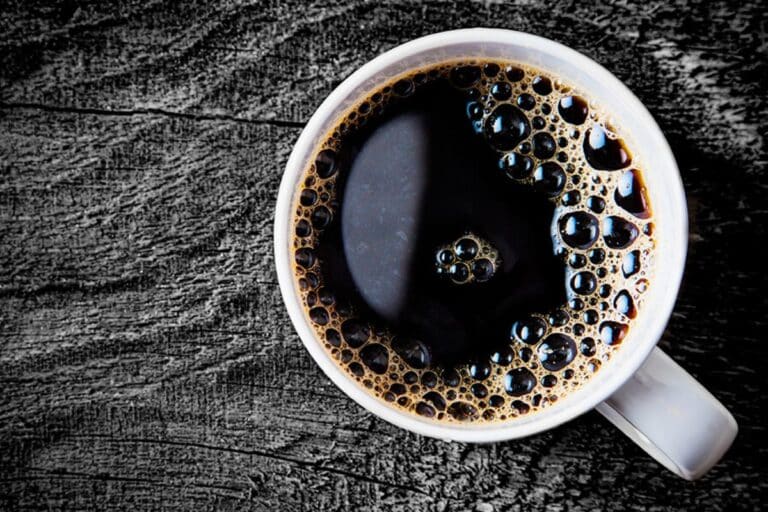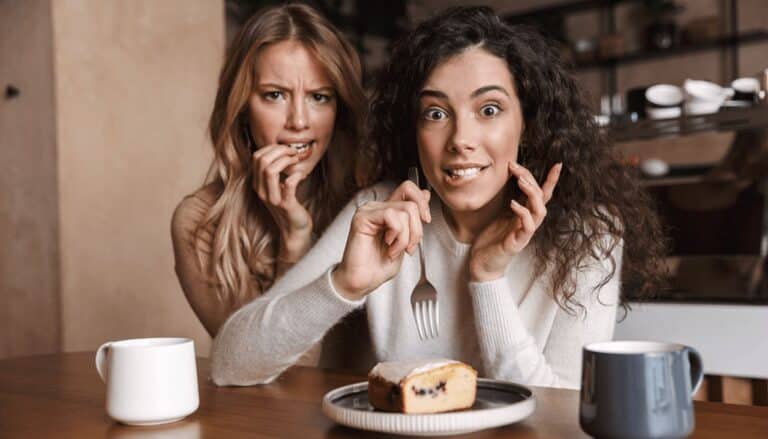Coffee, often revered as “the elixir of life,” has fascinated people across cultures and geographies for centuries. A commodity that rouses sleepy heads in the morning, fuels workdays, and prompts thoughtful conversations, coffee’s enduring popularity is indisputable. It’s estimated that people around the world consumed about 10.2 million metric tons of coffee. Yet, behind every flavorful cup of joe is a bean that can be traced back to distinct corners of the globe. This article aims to take you on a journey through those regions known for producing the highest quality coffee beans. We will explore the factors that influence the flavor profile and superiority of the beans. From the high-altitude plantations of Colombia to the rich, volcanic soils of Ethiopia, let’s delve into the origins of your favorite brew.
What Determines the Quality of Coffee Beans?
The quality of coffee beans hinges on a complex interplay of factors, much like wine, with geography, climate, altitude, and plant type having significant influence.
Geography, Climate, Altitude, and Plant Type
- Geography: The geographical location of the coffee plantation plays a crucial role. The soil type affects the mineral content and, consequently, the flavors that the plant absorbs. Volcanic soils, for example, are particularly rich in minerals and tend to produce highly flavored coffee beans.
- Climate: Coffee plants thrive in a stable climate with temperatures between 60°F and 70°F, which is typically found in tropical regions. Excessive rain, temperature fluctuations, or harsh weather conditions can damage the crops and affect bean quality.
- Altitude: The altitude at which coffee is grown impacts the taste of the coffee beans. Beans grown at higher altitudes are often denser and have more acidity and complex flavor profiles. This is because the cooler temperatures at higher elevations slow down the growth of the coffee cherries, allowing more time for the beans inside to develop.
- Plant type: The species of coffee plant also influences the quality of the beans. There are two primary types of coffee plants, Coffea Arabica and Coffea Robusta. Arabica beans, which are more delicate and flavorful, are generally considered higher quality. Robusta beans on the other hand, have a stronger and more bitter taste. Robusta beans are typically used in instant coffee or as a filler in lower-quality blends.
Harvesting and Processing Methods
Harvesting: The timing of the harvest is crucial. Coffee cherries don’t all ripen at the same time, and the beans reach their peak flavor when the cherries are fully ripe. Skilled farmers know exactly when to harvest to ensure the beans have the best possible taste.
Processing: After harvesting, the beans must be extracted from the cherries and dried. This can be done in two ways. First the wet processing where the beans are soaked to remove the cherry flesh. Second the dry processing where the cherries are sun-dried before the beans are extracted. Each method impacts the flavor of the beans. Wet processing generally results in a cleaner taste, while dry processing imparts a fruitier flavor.
In summary, the quality of coffee beans is a product of myriad influences, from the macro (geography, climate) to the micro (harvesting and processing techniques). Each variable contributes to the bean’s ultimate flavor, aroma, acidity, and overall quality.
History of Coffee

The exact origins of coffee are shrouded in legend, but the powerful beverage has certainly had a profound influence on human history. The cultivation of coffee is believed to have started in the 9th century in the highlands of Ethiopia. From there it spread to Yemen and other parts of the Arabian Peninsula in the 14th century. There it was cultivated extensively and coffee drinking became an integral part of the local culture.
The 16th century saw coffee spread to Persia, Egypt, Syria, and Turkey, where it was embraced by the intellectual community and the general populace alike. The famous coffee houses or “qahveh khaneh” emerged as hubs for socializing and intellectual discourse.
The 17th century witnessed coffee’s entrance into Europe, where it initially faced opposition but was eventually accepted. Coffeehouses multiplied across the continent and became places of social activity and communication.
In the late 17th century, coffee found its way to the Americas through the efforts of European colonizers. Today, Brazil is the world’s largest coffee producer. It accounts for about a third of the world’s coffee.
Ethiopia, known as the birthplace of coffee, holds a crucial place in the history of the beverage. According to legend, it was in this region where the energizing effects of the coffee plant were discovered by a goat herder named Kaldi. He noticed his goats were particularly lively after eating the plant’s cherries, and upon trying them himself, experienced the same effects.
Ethiopia’s indigenous coffee varieties, particularly in the regions of Harrar, Sidamo, and Yirgacheffe, are renowned worldwide for their diverse flavor profiles. The country’s unique coffee culture, characterized by the traditional Ethiopian coffee ceremony, is a testament to the country’s long-standing relationship with this beloved drink.
The history of coffee, tracing back to its origins in Ethiopia, tells a story of social, cultural, and economic influence that continues to evolve and permeate societies worldwide today. This journey through time brings to life how coffee transformed from a wild plant in the Ethiopian forests to a daily staple enjoyed by millions around the globe.
World’s Top Coffee Producing Regions

South America
Brazil: Brazil, the world’s largest coffee producer, is best known for its vast plantations and mass production. Brazilian coffee is characterized by its nutty, chocolatey notes and low acidity, making it excellent for espresso. The country grows both Arabica and Robusta, but the former is more predominant. Key coffee-growing regions include Minas Gerais, São Paulo, and Espirito Santo.
Colombia: Colombian coffee is revered globally for its well-balanced flavor, medium body, and bright acidity. Grown predominantly in the regions of Antioquia, Caldas, Huila, and Tolima, Colombian coffee is unique due to the country’s varied microclimates and high-altitude plantations. The country’s mainstay is Arabica beans, contributing to the smooth, fruity, and slightly nutty flavor of the coffee.
Central America
Costa Rica: Costa Rican coffee is highly regarded for its balanced body, fruity brightness, and smooth finish. The country’s coffee growing regions like Tarrazu, West Valley, and Central Valley, blessed with volcanic soil and ideal climatic conditions, are key to its high-quality coffee production. Costa Rica strictly grows Arabica coffee, adhering to a law passed in 1989 to maintain quality standards.
Guatemala: Guatemalan coffee is known for its diverse flavor profiles – from full-bodied with a rich chocolatey-cocoa flavor and toasty undertones to lighter bodies with a fruity acidity. Regions like Antigua, Huehuetenango, and Cobán have unique microclimates and high-altitude terrains contributing to these varied flavors. Guatemala is also primarily an Arabica-producing country.
Africa
Ethiopia: As the birthplace of coffee, Ethiopia offers a wide range of coffee types and flavors. Ethiopian coffee is often characterized by its wine-like acidity and bright fruity flavors, often with a floral aroma. The key coffee-producing regions include Sidamo, Yirgacheffe, and Harrar, each with distinct flavor profiles ranging from spicy and winey to sweet and citrusy.
Kenya: Kenyan coffee, grown in high altitudes along the Rift Valley, is globally renowned for its high acidity, full body, and strong, wine-like flavors, often with black currant undertones. The main coffee variety grown is Arabica. The country’s unique, meticulous wet-processing method enhances the quality of the beans and their flavor.
Asia
Vietnam: Vietnam is the world’s second-largest coffee producer, predominantly growing Robusta beans. Vietnamese coffee is typically strong, full-bodied, and has a higher caffeine content. It’s commonly used in espresso or traditional Vietnamese iced coffee with sweetened condensed milk, known as ca phe sua da.
Indonesia: Indonesia, with its tropical climate and rich volcanic soil, produces coffee with deep, complex flavors. Regions like Sumatra, Sulawesi, and Java produce coffees that are full-bodied, often with earthy or spicy flavors. Unique to Indonesia is the “wet-hulling” processing method (Giling Basah), contributing to the distinct flavor and low acidity of the beans. Both Arabica and Robusta beans are grown in the country.
Specialty Coffee and Single Origin Trend

Explanation of the Concept of Single-Origin Coffee
Single-origin coffee refers to coffee beans that are sourced from a single producer, crop, or region in one country. The aim of single-origin is to preserve the unique characteristics of the coffee beans from that specific area, including the influence of factors such as soil, climate, altitude, and processing methods. This results in a distinct flavor profile that reflects the coffee’s ‘terroir,’ a term borrowed from wine-making, referring to the environmental conditions where the coffee is grown.
Case Studies on Single-Origin Coffees
- Ethiopian Yirgacheffe: Grown in southern Ethiopia, Yirgacheffe is one of the best-known single-origin coffees. The beans produce a coffee with a delicate body and bright acidity, offering complex flavors of berries, wine, and floral notes.
- Colombian Medellin: Known for their smooth and well-balanced flavor, these beans from the mountains of Medellin are often described as having medium body with a slight nuttiness, and a subtle, fruity undertone.
- Costa Rican Tarrazu: The high-altitude Tarrazu region in Costa Rica produces some of the world’s finest coffee. Tarrazu coffee is renowned for its full body, robust richness, and bright citrus-like acidity.
- Sumatra Mandheling: From the Indonesian island of Sumatra, Mandheling coffee is loved for its full body, low acidity, and complex flavor profile, featuring earthy, chocolatey notes with a hint of licorice.
The Rise of the Specialty Coffee Trend
The specialty coffee movement has risen tremendously in the last few decades, placing an emphasis on the entire lifecycle of coffee — from farming and processing to roasting and brewing. This trend aims to promote the best quality coffee and often focuses on single-origin offerings to showcase unique flavor profiles.
This movement has had several impacts on coffee production. Firstly, it has increased the demand for high-quality, single-origin beans, resulting in improved farming and processing methods. Secondly, it has led to more sustainable and fair-trade practices as consumers become more conscious about the origin of their coffee and the conditions in which it is produced.
Additionally, the trend has created a burgeoning market for home brewing and coffee tasting, with coffee enthusiasts eager to explore unique flavor profiles from different regions. The rise of specialty coffee shops worldwide testifies to the growing interest in and appreciation for high-quality, distinctive coffee.
Future of Coffee Bean Production

Climate Change Could Affect Coffee Production
Climate change presents significant challenges to the future of coffee production. Rising temperatures, changing rainfall patterns, and increased incidences of pests and diseases could drastically impact coffee-growing regions, potentially reducing the areas suitable for coffee cultivation and negatively affecting crop yields and quality. The influence of climate change is especially concerning for Arabica coffee, which is more sensitive to temperature changes than Robusta.
This is a real threat to coffee biodiversity and the livelihood of coffee farmers, particularly smallholder farmers in countries like Ethiopia and Colombia. As climate conditions change, the taste of coffee could also alter, affecting the distinct flavor profiles we associate with coffee from different regions.
Sustainability Efforts in Coffee Cultivation
As awareness of these challenges grows, efforts to make coffee cultivation more sustainable are gaining momentum. Sustainability in coffee production encompasses a broad range of issues, from environmental impacts to social and economic equity.
On the environmental front, practices such as shade-grown coffee, organic farming, and responsible waste management are being promoted. Shade-grown coffee, for instance, helps to preserve biodiversity, reduce soil erosion, and sequester carbon.
On the socio-economic side, fair-trade practices aim to ensure coffee farmers receive a fair price for their beans, promoting better income stability and living conditions.
Furthermore, research is being undertaken to develop new varieties of coffee that are more resistant to diseases, pests, and changing climate conditions. Thus aiming to future-proof coffee production.
While these initiatives are promising, their success relies on the collaboration of all stakeholders in the coffee industry. This includes farmers, roasters, retailers, and consumers. The future of coffee bean production will depend on the industry’s ability to adapt to changing conditions. They will need to do so in a way that supports both the environment and the people at the heart of coffee cultivation.
Conclusion

From the lush landscapes of South America to the rich soils of Africa and the unique climates of Asia, each coffee-producing region brings something unique to the table. Whether it’s the nutty and chocolatey notes of Brazilian coffee, the balanced and fruity flavors of Colombian beans, the bright and wine-like profiles of Ethiopian coffee, or the strong and full-bodied tastes of Vietnamese Robusta, the diversity in the global coffee landscape is astounding.
The distinctiveness of each region’s coffee is a testament to the intricate interplay of geography, climate, altitude, and human influence in shaping the beans’ flavor profiles. Each coffee bean carries with it a story of the place and the people who have cultivated it.
The world of coffee is as complex and varied as the regions where the beans are grown. Every cup we drink is a testament to the diversity of the natural world and the hard work of those who cultivate, process, and prepare the beans. The growing trend towards single-origin and specialty coffee is a nod to this diversity, encouraging coffee lovers to appreciate the unique flavors and characteristics of beans from different parts of the world.
As we look to the future, the challenges of climate change and the need for sustainable practices in coffee cultivation underscore the importance of protecting this beloved beverage. By cherishing the diversity of coffee, supporting fair trade, and striving for sustainability in its production, we can ensure that we continue to enjoy the rich and diverse flavors of the world’s best coffee beans.






